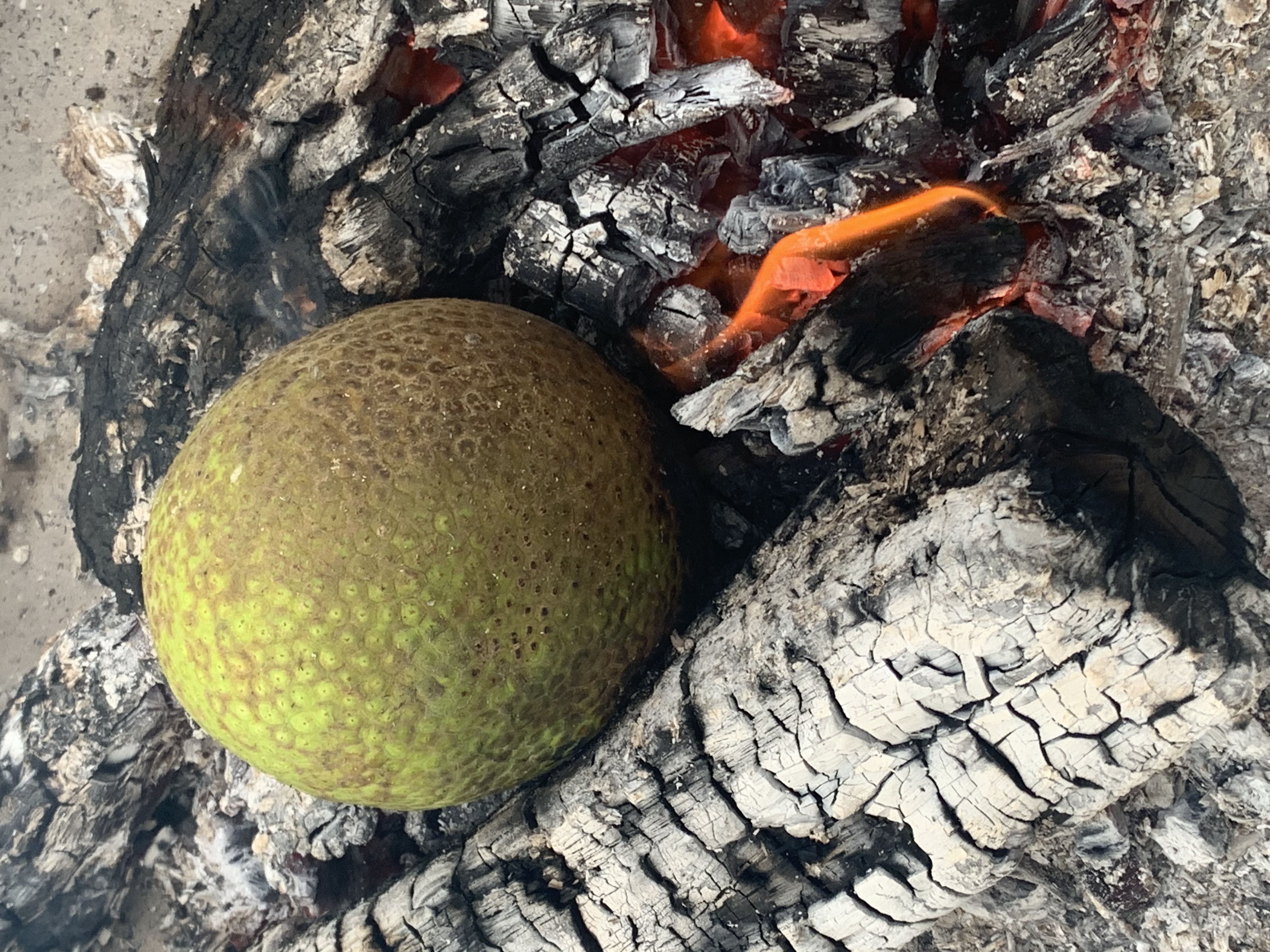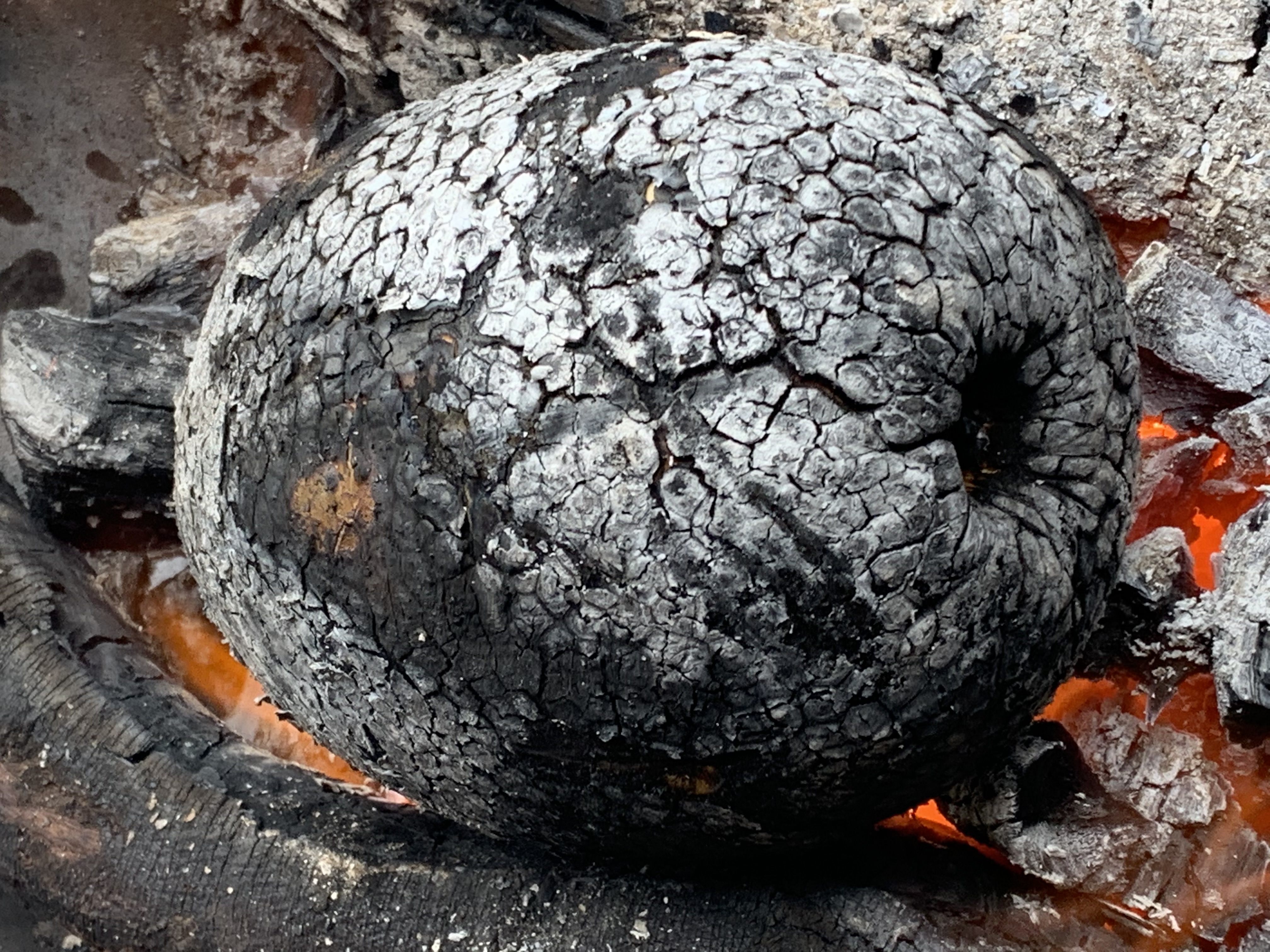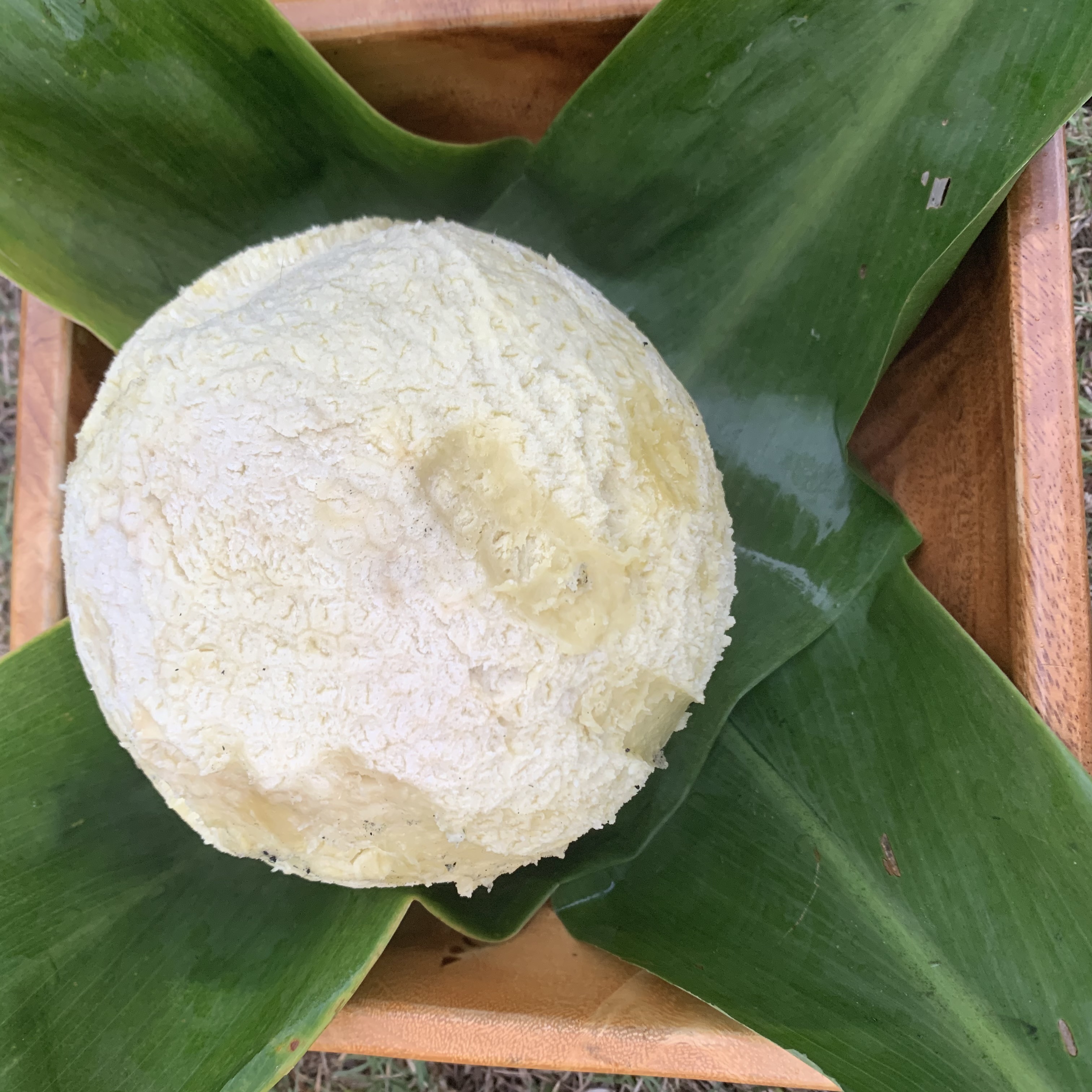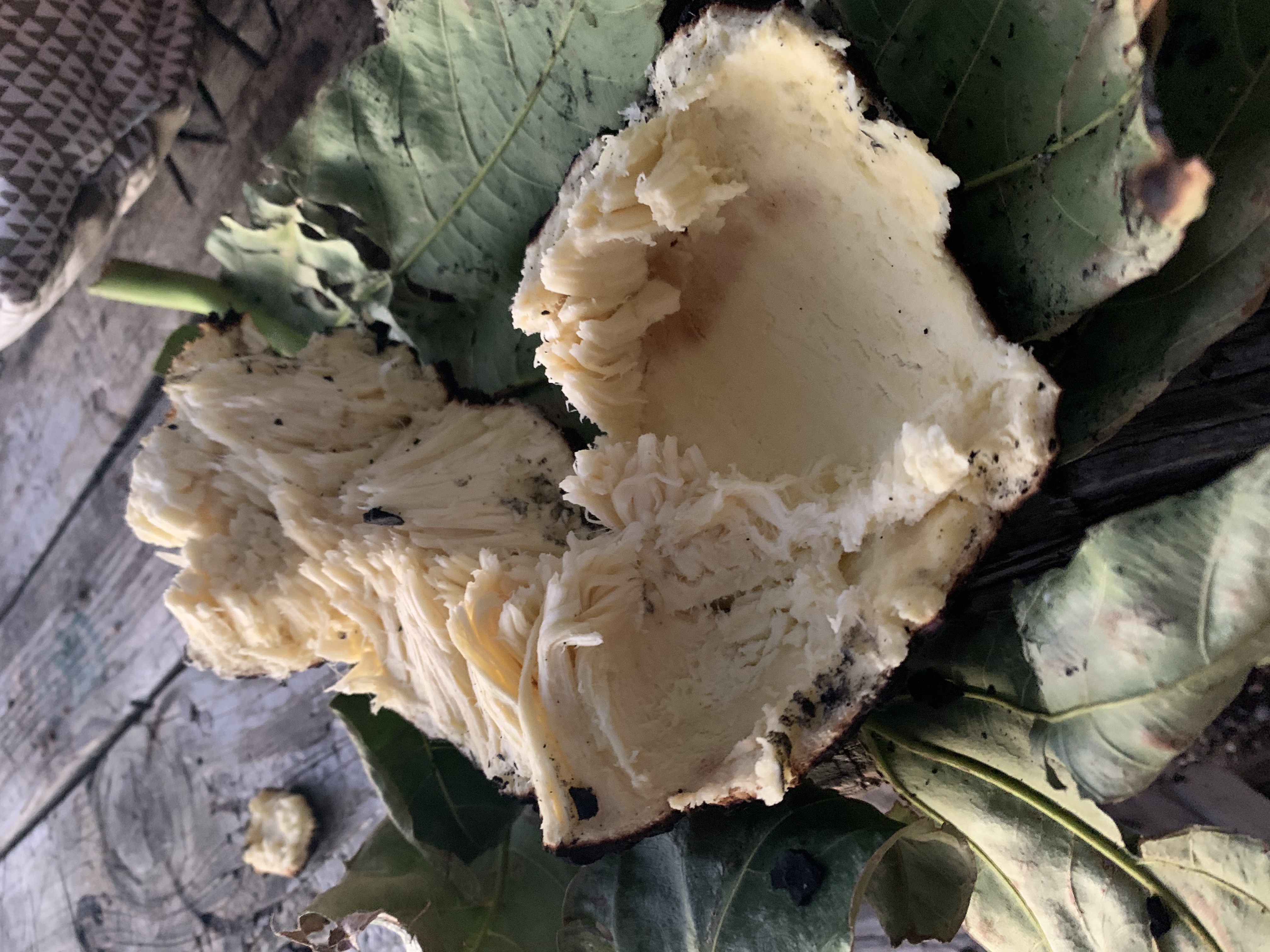How to cook ʻUlu using traditional methods
ʻUlu is a traditional staple crop that has been cherished by many cultures across Polynesia for centuries. During ʻulu season, the fruit is enjoyed for breakfast, lunch and dinner. As the main starch of every meal, it is a common practice to continuously cook many fruits to last a family for several days at a time. ʻUlu was traditionally cooked in an open fire and, for larger quantities, in an underground imu (steamed) or an above ground umu (dry heat).
Excess ʻulu was traditionally turned into a fermented paste and stored underground for several months. This was an important storehouse of food during the off season or in times of natural disasters. In short, ʻulu has and continues to be an essential starch crop providing hundreds of pounds of food per tree, year after year.
Pūlehu ʻUlu
The most traditional and practical way of cooking ʻulu is on a hot open fire. The firm, mature fruit is roasted whole within 2 or 3 days of picking, right before it starts to become soft.
The whole fruit placed in a hot fire is turned every 3 minutes for even roasting. Depending on the size of the fruit, it is cooked for a total of about 50 minutes to an hour.
When cooked correctly, the skin of the ʻulu should form a charred, black shell. At this point, if you were to drop the fruit on the ground, the skin would crack open and the pleasant aroma of fire-roasted ʻulu would fill the air.
With the back of a spoon or a bamboo stick, the skin is carefully cleaned off while the ʻulu is still hot. The cooked ʻulu will have a rich flavor and gooey consistency, like the inside of a doughy bread.
The cooked ʻulu flesh is then separated from the core and can be enjoyed with a simple citrus-based or coconut milk sauce, or it can be smashed into a paʻiʻai.




